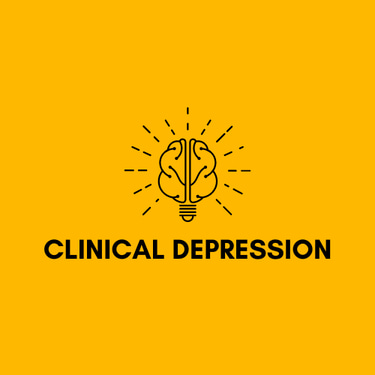For Questions: Text (833)233-0869
Telehealth Services for Depression Disorder: A Comprehensive Guide to Virtual Mental Health Care


Introduction
In today’s fast-paced world, mental health concerns such as anxiety and depression have become increasingly prevalent. The pressures of modern life, combined with the ongoing challenges posed by global events, have contributed to a significant rise in mental health disorders. Among these, depression stands out as one of the most common and debilitating conditions, affecting millions of people worldwide. Fortunately, advancements in technology have made mental health care more accessible than ever before, particularly through telehealth services. This article delves into the importance of telehealth services for depression disorder, exploring how they work, their benefits, and how to make the most out of these services.
Understanding Depression Disorder
Before exploring the role of telehealth in managing depression, it’s essential to understand what depression is. Depression, also known as major depressive disorder (MDD), is a serious mood disorder that affects how a person feels, thinks, and handles daily activities. It’s more than just feeling sad or having a bad day; depression is a persistent condition that can lead to significant impairments in daily life. Symptoms of depression may include:
Persistent sadness or low mood
Loss of interest or pleasure in activities once enjoyed
Changes in appetite and weight
Sleep disturbances, including insomnia or oversleeping
Fatigue or loss of energy
Feelings of worthlessness or guilt
Difficulty concentrating or making decisions
Thoughts of death or suicide
Depression can range from mild to severe, and in some cases, it can be life-threatening. Traditional treatment options include psychotherapy (talk therapy), medication, or a combination of both. However, access to these treatments can be challenging for many individuals due to factors such as geographic location, financial constraints, or stigma surrounding mental health care. This is where telehealth services for depression disorder come into play.
What Are Telehealth Services for Depression Disorder?
Telehealth, also known as telemedicine, refers to the delivery of health care services through digital communication technologies such as video conferencing, phone calls, or text messaging. Telehealth services for depression disorder involve providing mental health care remotely, allowing patients to receive treatment from the comfort of their own homes. This approach has gained significant traction in recent years, particularly during the COVID-19 pandemic, when in-person visits became challenging or impossible.
Telehealth services for depression disorder typically include:
Virtual Therapy Sessions: Patients can meet with licensed therapists or counselors through video conferencing platforms. These sessions are similar to traditional in-person therapy but take place online.
Remote Psychiatric Consultations: Psychiatrists can assess, diagnose, and prescribe medications for depression through telehealth platforms. Follow-up appointments can also be conducted virtually.
Online Support Groups: Patients can join online communities or support groups led by mental health professionals, providing a space to share experiences and receive emotional support.
Digital Mental Health Tools: Many telehealth platforms offer digital tools such as mood tracking apps, cognitive-behavioral therapy (CBT) exercises, and meditation guides to complement traditional therapy.
The Benefits of Telehealth Services for Depression Disorder
Telehealth services for depression disorder offer numerous benefits that make mental health care more accessible, convenient, and effective. Here are some of the key advantages:
1. Accessibility and Convenience
One of the most significant benefits of telehealth services is that they remove barriers to access. Patients living in rural or remote areas, where mental health services are often limited or unavailable, can receive care without having to travel long distances. Additionally, telehealth eliminates the need for patients to take time off work or arrange for childcare to attend appointments. This convenience can lead to more consistent and timely treatment, which is crucial for managing depression effectively.
2. Reduced Stigma
Stigma surrounding mental health issues can prevent individuals from seeking the help they need. Telehealth services offer a level of privacy and anonymity that can make it easier for people to reach out for support. Patients can engage in therapy sessions from the comfort of their own homes, without the fear of being seen entering a mental health clinic. This can be particularly beneficial for individuals who are hesitant to seek treatment due to concerns about being judged by others.
3. Continuity of Care
For individuals with chronic depression, consistent and ongoing care is essential for managing symptoms and preventing relapses. Telehealth services enable continuous care by allowing patients to stay in touch with their mental health providers, even when they are unable to attend in-person appointments. This is especially important during times of crisis, such as during the COVID-19 pandemic, when access to traditional health care services may be disrupted.
4. Cost-Effectiveness
Telehealth services can be more cost-effective than traditional in-person care. Patients can save money on transportation, childcare, and time off work. Additionally, some telehealth platforms offer lower fees for virtual therapy sessions compared to in-person visits. Insurance companies are increasingly recognizing the value of telehealth and may cover these services, making them an affordable option for many patients.
5. Personalized Care
Telehealth platforms often offer a range of mental health services that can be tailored to meet the unique needs of each patient. For example, individuals with depression may benefit from a combination of virtual therapy, medication management, and digital tools such as mood tracking apps. This personalized approach allows patients to receive the most appropriate and effective care for their specific condition.
Challenges and Limitations of Telehealth Services for Depression Disorder
While telehealth services for depression disorder offer numerous benefits, they are not without challenges and limitations. It’s important to be aware of these potential issues to make informed decisions about treatment.
1. Technology Barriers
Telehealth relies on technology, and not all patients have access to the necessary devices or reliable internet connections. This digital divide can make it difficult for some individuals to participate in telehealth services, particularly those in low-income or rural areas. Additionally, older adults or those with limited technical skills may struggle to navigate telehealth platforms.
2. Limited Physical Interaction
While virtual therapy can be effective, it lacks the physical presence that some patients may find comforting in traditional in-person therapy. Non-verbal cues, such as body language, may be more challenging to interpret through a screen, potentially affecting the therapeutic relationship. Some patients may also feel less connected to their therapist when meeting virtually, which could impact the effectiveness of treatment.
3. Privacy Concerns
Although telehealth offers a level of privacy, there are still concerns about the confidentiality of digital communication. Patients may worry about the security of their personal information and whether their therapy sessions are truly private. It’s essential for telehealth platforms to use secure, encrypted communication channels to protect patient data.
4. Regulatory and Insurance Issues
The regulatory landscape for telehealth is still evolving, and there may be discrepancies in how telehealth services are regulated and reimbursed across different regions. Some insurance companies may not fully cover telehealth services, or they may have specific requirements that must be met for coverage. Patients should verify their insurance coverage and understand the legal and regulatory framework in their area before starting telehealth services.
How to Make the Most of Telehealth Services for Depression Disorder
To maximize the benefits of telehealth services for depression disorder, patients should take a proactive approach to their mental health care. Here are some tips for making the most out of telehealth:
1. Choose the Right Platform
Not all telehealth platforms are created equal. Patients should research and choose a platform that offers the services they need, such as virtual therapy, psychiatric consultations, and digital mental health tools. It’s also important to ensure that the platform uses secure, encrypted communication to protect patient privacy.
2. Prepare for Virtual Appointments
Just like with in-person therapy, it’s essential to prepare for virtual appointments. Patients should find a quiet, private space where they can talk openly with their therapist without interruptions. It’s also helpful to make a list of topics or concerns to discuss during the session.
3. Be Open and Honest
Effective therapy requires open and honest communication. Patients should feel comfortable discussing their thoughts, feelings, and concerns with their therapist, even if it’s difficult. Being transparent about symptoms and progress can help the therapist tailor treatment to the patient’s needs.
4. Use Complementary Digital Tools
Many telehealth platforms offer digital tools that can complement traditional therapy, such as mood tracking apps, CBT exercises, and meditation guides. Patients should take advantage of these resources to enhance their treatment and manage their symptoms between appointments.
5. Stay Consistent
Consistency is key when it comes to managing depression. Patients should aim to attend all scheduled appointments and follow through with any recommended treatment plans. If issues arise, such as technical difficulties or scheduling conflicts, it’s important to communicate with the therapist to find solutions.
Conclusion
Telehealth services for depression disorder have revolutionized the way mental health care is delivered, making it more accessible, convenient, and personalized. While there are challenges to consider, the benefits of telehealth far outweigh the drawbacks for many patients. By understanding how to make the most out of these services, individuals with depression can receive the care they need to manage their symptoms and improve their quality of life. As telehealth continues to evolve, it will likely play an increasingly important role in the future of mental health care.
©2025
Clinical Depression
For Questions: Text
(833) 233-0869
